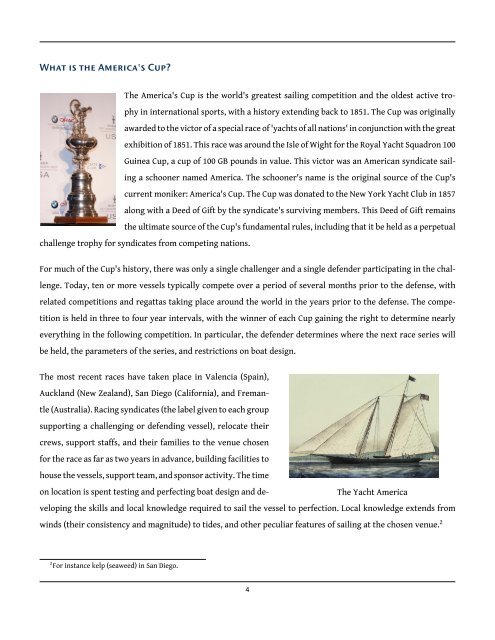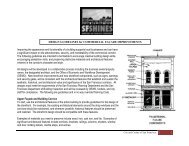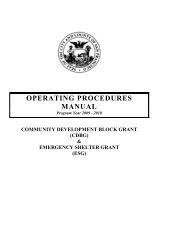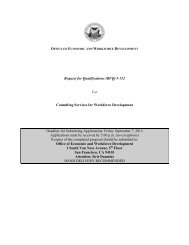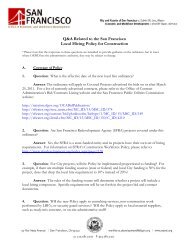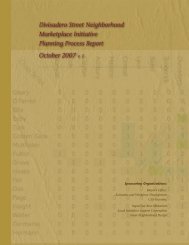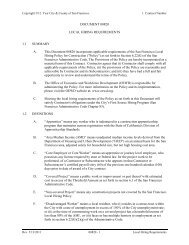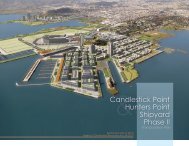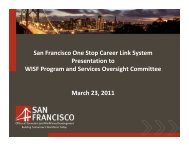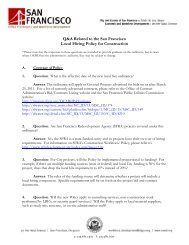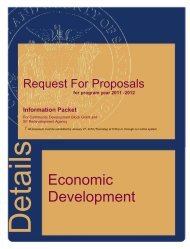The America's Cup: Economic Impacts of a Match - Bay Area Council
The America's Cup: Economic Impacts of a Match - Bay Area Council
The America's Cup: Economic Impacts of a Match - Bay Area Council
You also want an ePaper? Increase the reach of your titles
YUMPU automatically turns print PDFs into web optimized ePapers that Google loves.
What is the <strong>America's</strong> <strong>Cup</strong>?<br />
<strong>The</strong> <strong>America's</strong> <strong>Cup</strong> is the world's greatest sailing competition and the oldest active trophy<br />
in international sports, with a history extending back to 1851. <strong>The</strong> <strong>Cup</strong> was originally<br />
awarded to the victor <strong>of</strong> a special race <strong>of</strong> 'yachts <strong>of</strong> all nations' in conjunction with the great<br />
exhibition <strong>of</strong> 1851. This race was around the Isle <strong>of</strong> Wight for the Royal Yacht Squadron 100<br />
Guinea <strong>Cup</strong>, a cup <strong>of</strong> 100 GB pounds in value. This victor was an American syndicate sailing<br />
a schooner named America. <strong>The</strong> schooner's name is the original source <strong>of</strong> the <strong>Cup</strong>'s<br />
current moniker: <strong>America's</strong> <strong>Cup</strong>. <strong>The</strong> <strong>Cup</strong> was donated to the New York Yacht Club in 1857<br />
along with a Deed <strong>of</strong> Gift by the syndicate's surviving members. This Deed <strong>of</strong> Gift remains<br />
the ultimate source <strong>of</strong> the <strong>Cup</strong>'s fundamental rules, including that it be held as a perpetual<br />
challenge trophy for syndicates from competing nations.<br />
For much <strong>of</strong> the <strong>Cup</strong>'s history, there was only a single challenger and a single defender participating in the challenge.<br />
Today, ten or more vessels typically compete over a period <strong>of</strong> several months prior to the defense, with<br />
related competitions and regattas taking place around the world in the years prior to the defense. <strong>The</strong> competition<br />
is held in three to four year intervals, with the winner <strong>of</strong> each <strong>Cup</strong> gaining the right to determine nearly<br />
everything in the following competition. In particular, the defender determines where the next race series will<br />
be held, the parameters <strong>of</strong> the series, and restrictions on boat design.<br />
<strong>The</strong> most recent races have taken place in Valencia (Spain),<br />
Auckland (New Zealand), San Diego (California), and Fremantle<br />
(Australia). Racing syndicates (the label given to each group<br />
supporting a challenging or defending vessel), relocate their<br />
crews, support staffs, and their families to the venue chosen<br />
for the race as far as two years in advance, building facilities to<br />
house the vessels, support team, and sponsor activity. <strong>The</strong> time<br />
on location is spent testing and perfecting boat design and developing<br />
the skills and local knowledge required to sail the vessel to perfection. Local knowledge extends from<br />
<strong>The</strong> Yacht America<br />
winds (their consistency and magnitude) to tides, and other peculiar features <strong>of</strong> sailing at the chosen venue. 2<br />
2 For instance kelp (seaweed) in San Diego.<br />
4


